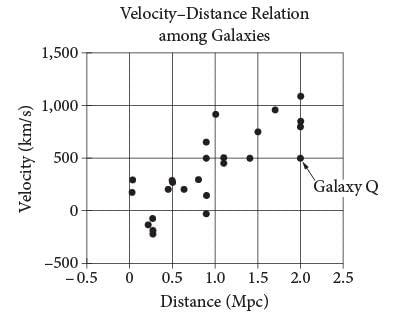Digital SAT Mock Test - 4 - SAT MCQ
30 Questions MCQ Test SAT Mock Test Series 2025 - Digital SAT Mock Test - 4
What does the text most strongly suggest about Sleep No More’s use of its performance space?
Which finding, if true, would most directly support Armijo’s hypothesis?
Which finding, if true, would most directly support the researchers’ conclusion?
Which choice best describes data in the graph that support the team’s conclusion?
Which choice most effectively uses data from the table to complete the statement?
Which choice most effectively uses data from the table to support the research team’s conclusion
Which choice completes the text so that it conforms to the conventions of Standard English?
Which choice completes the text with the most logical and precise word or phrase?
Which choice most effectively uses data from the table to complete the example?
Which choice best describes the function of the underlined sentence in the text as a whole?
Which choice completes the text so that it conforms to the conventions of Standard English?
The student wants to present the study and its methodology. Which choice most effectively uses relevant information from the notes to accomplish this goal?
Which choice completes the text with the most logical and precise word or phrase?
A truck enters a stretch of road that drops 4 meters in elevation for every 100 meters along the length of the road. The road is at 1,300 meters elevation where the truck entered, and the truck is traveling at 16 meters per second along the road. What is the elevation of the road, in meters, at the point where the truck passes t seconds after entering the road?
Question refer to the following information:
A survey of 170 randomly selected teenagers aged 14 through 17 in the United States was conducted to gather data on summer employment of teenagers. The data are shown in the table below.

Which of the following is closest to the percent of those surveyed who had a summer job?
Questions refer to the following information:
In 1929, the astronomer Edwin Hubble published the data shown. The graph plots the velocity of galaxies relative to Earth against the distances of galaxies from Earth.

Hubble’s data can be modeled by the equation v = 500d, where v is the velocity, in kilometers per second, at which the galaxy is moving away from Earth and d is the distance, in megaparsecs, of the galaxy from Earth.
Assume that the relationship is valid for larger distances than are shown in the graph. (A megaparsec (Mpc) is 3.1 × 1019 kilometers.)
Based on the model, what is the velocity, in kilometers per second, of a galaxy that is 15 Mpc from Earth?
A circle is graphed in the xy-plane. If the circle has a radius of 3 and the center of the circle is at (4, − 2), which of the following could be an equation of the circle?
ax + 3y = c
6x + 9y = 15
In the system of equations above, a and c are constants. If this system has infinitely many solutions, what is the value of a/c?

For which value of x is the function f above undefined?

If m < 0 and x = 6 in the equation above, what is the value of m?
If h and k are functions such that h(x) = x + 3 and h(g(2)) = 9, which of the following could describe g(x)?
Jeri has edited 1/5 of her term paper. If she has edited 15 pages, how many pages does she have left to edit?
|
8 docs|15 tests
|



 Therefore, the elevation of the road at the point where the truck passes t seconds after entering the road is 1,300 – 0.64t meters.
Therefore, the elevation of the road at the point where the truck passes t seconds after entering the road is 1,300 – 0.64t meters. 














